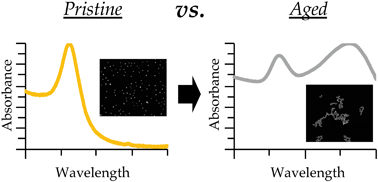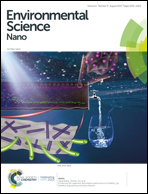The influence of surface coating functionality on the aging of nanoparticles in wastewater†
Abstract
Efforts to predict the environmental fate of engineered nanomaterials (ENMs) are frequently based on the physiochemical properties and behavior of the ENMs in their pristine, “as-produced” state. However, it is well-established that ENMs can be physically, biologically, and chemically transformed, resulting in altered physiochemical properties and behavior. Wastewater treatment plants (WWTPs) represent an important stage in an ENM's life-cycle where they can be transformed. To better understand the properties of ENMs discharged from WWTPs into surface waters, we investigated how the transformation processes of aggregation and corona formation are influenced by the surface coating applied to ENMs during their manufacture. Using 40 nm gold nanoparticles coated with polyethylene glycol, lipoic acid, or branched polyethylenimine as model ENMs, batch experiments were performed to investigate aggregation and corona formation during the primary clarification and activated sludge treatment stages. A tangential flow filtration system was used to evaluate if the initial transformations were altered as the aquatic chemistry of the background matrix was changed, mimicking the varying conditions ENMs would experience during transport through a WWTP. Using a combination of corroborative techniques including dynamic light scattering, phase analysis light scattering, ultraviolet-visible light spectroscopy, and transmission electron microscopy, we find that the model ENMs aggregated in each wastewater matrix, regardless of the initial surface coating. Differences in the UV-vis spectra indicate that the nature of the corona acquired by the ENMs differed as a function of the surface coating of the pristine ENMs. In addition, initial ENM transformations during exposure to the influent wastewater persisted even as the background matrix changed. These results support the finding that ENMs discharged from WWTPs will not resemble their pristine analogs. Furthermore, the corona acquired by ENMs in WWTPs may vary in relation to their pristine properties and be dictated by conditions during early stage exposures.



 Please wait while we load your content...
Please wait while we load your content...